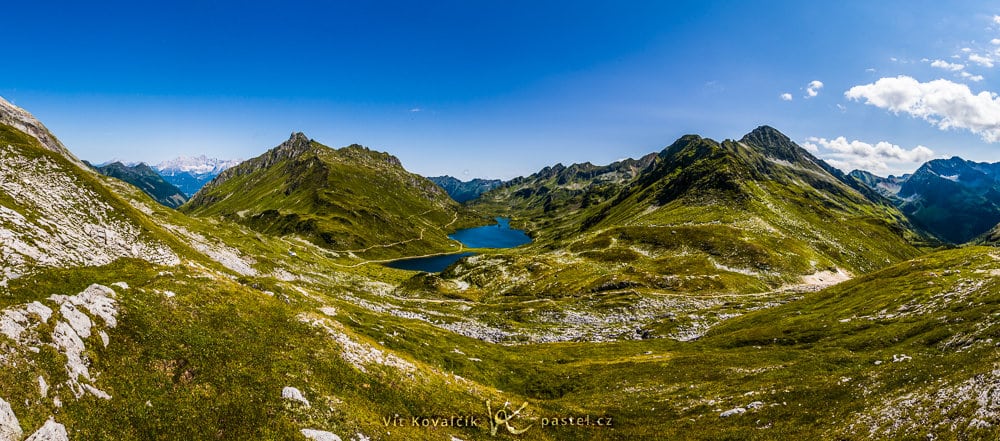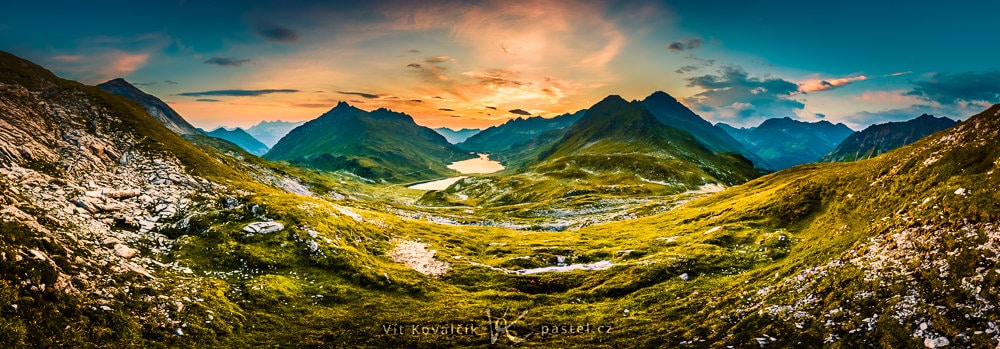Photo Story: Giglachsee Lakes Panorama
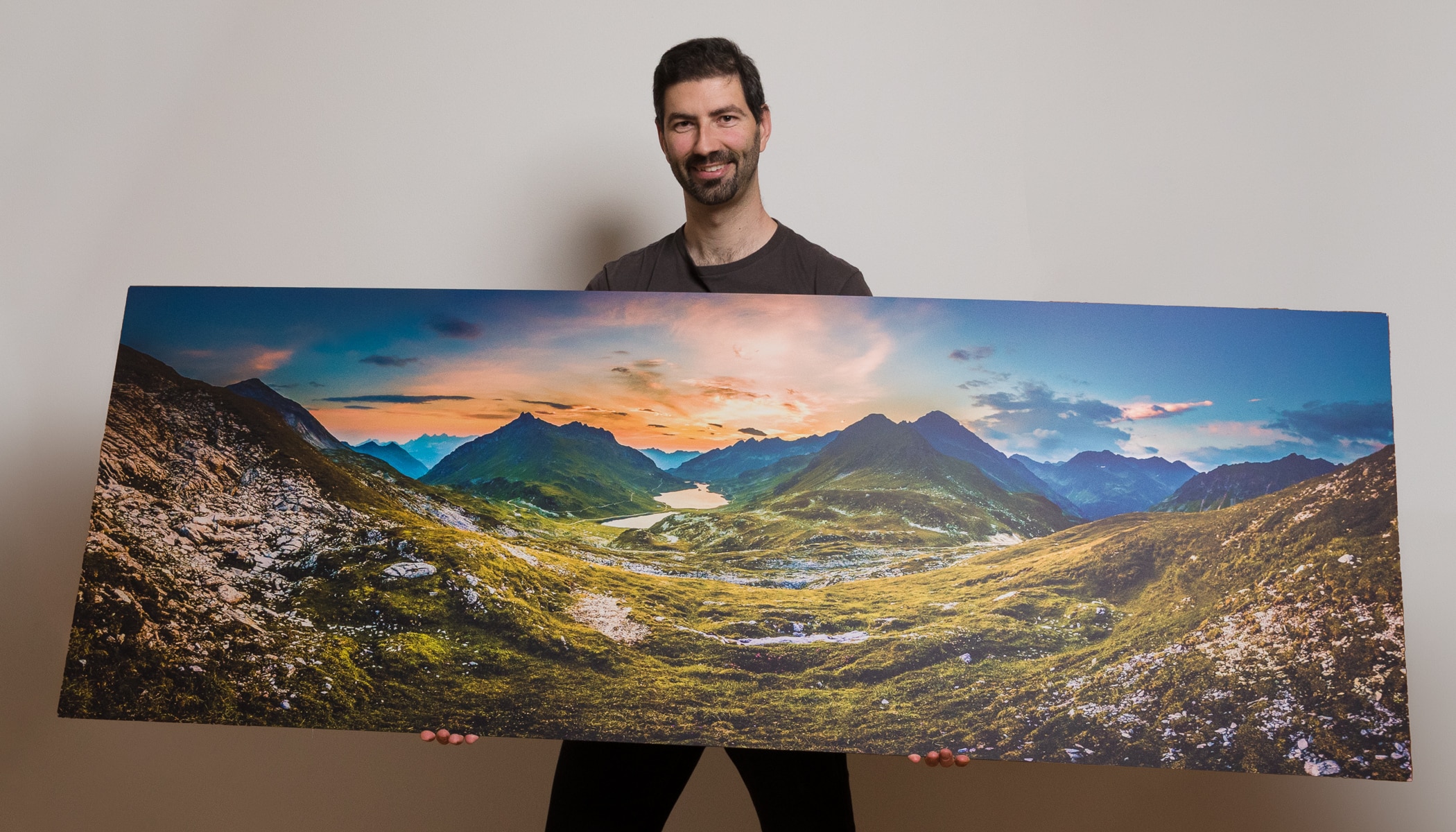
Alpine lakes are magical. They are surrounded by breathtaking mountain landscapes and have crystal-clear surfaces that reflect the landscape or the sky. I am drawn to water and one of my many trips led me to a pair of lakes in Giglachsee, where I had to research my surroundings before doing any photography.
This is the story of the panorama that hangs over my desk. I had the photo printed on a 2-meter-wide canvas. Aside from the fact that it’s nice to look at, it serves as a reminder of the effort it took to create.
But first, a note about the name: The lakes are called Oberer Giglachsee and Unterer Giglachsee, meaning upper and lower Giglachsee. Since the German see means lake in English, it makes sense to refer to them as the Giglach lakes or in German in the plural as the Giglachseen lakes. In this article, I use the more neutral “Giglachsee Lakes,” the same name as on the map. But you may find all three versions online.
How I find locations for photography
I like to take pictures around sunrise or sunset. If I’m in the mountains, I prefer higher elevations with a view of the surrounding areas. But since my accommodations are usually in the valley with its large radius for activity, I need to arrive at these locations at five or six in the morning. But the cable cars aren’t running that early and spending half the night hiking up the mountain is not my idea of a good time.
My solution is to try to find a road that gets me as high as possible and then walk a shorter distance. Sometimes I find a road and hope it will lead to an interesting viewpoint. But for the Giglachsee Lakes, I had a specific destination in mind.
Shooting location
I wasn’t sure where I would stand once dawn arrived. I used several mobile and PC apps to learn which peak the sun would appear behind. I usually prefer to shoot against the light, which can result in some spectacular shots. I also sometimes shoot with the sun on my left or right side. I usually avoid shooting with the sun at my back because this often results in boring, flat light.
In this particular location, it was easy to face the sun with the lakes between. But I wondered if it would be better to be right next to the water and get a large reflection of the mountains. Or if I should move to the opposite peak and look down at the lakes with a panorama of the Alps.
I had many options, but because of the distances between them, moving would be difficult. Once I decided on a shooting location, there was no time to move. Plus, wandering around in the dark in unknown terrain could be dangerous. It was time for some preliminary research.
Preliminary research
I decided to walk around the area like an ordinary hiker. This would allow me to find a good shooting location and see the location in daylight.
The main valley where the towns are located has an altitude of about 780m above sea level. The pair of Giglachsee lakes boast 1,930 m.a.s.l, which is a significant elevation gain. Fortunately, there is a road that leads to them with a parking lot located about 350m below the lakes (or 2.5km as the crow flies). However, the mountain peaks are another 500m above the lakes, making for a decent hike all together.
I found the views near the lakes uninteresting. The steep rocks limit visibility so you can’t see any of the surrounding landscape.
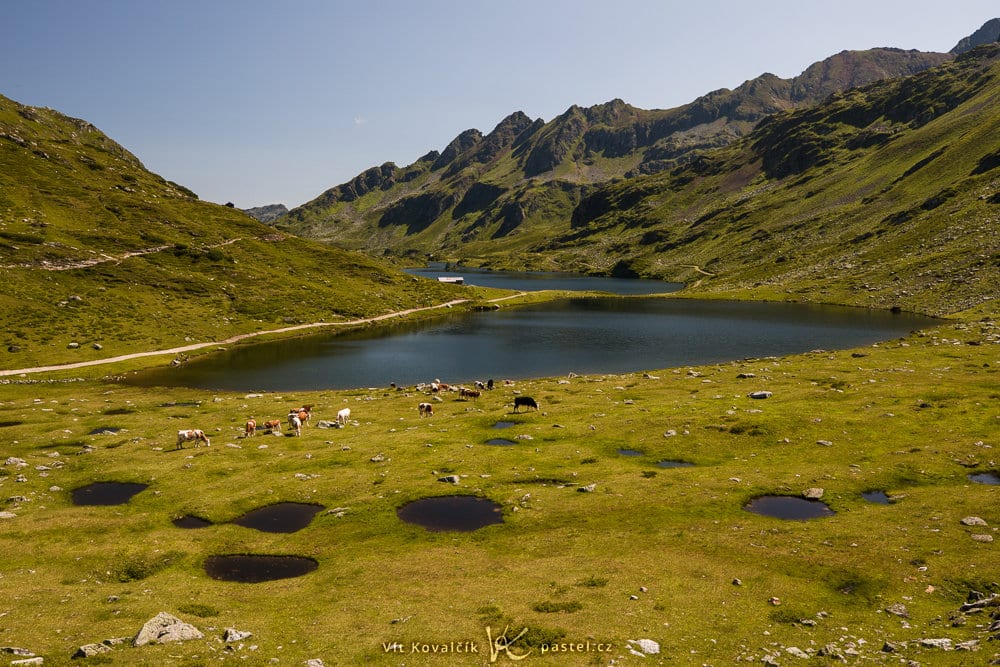
Canon 5D Mark IV, Canon EF 16-35/2.8 III, 1/60s, f/14, ISO 100, focal length 32mm
I visited one of the nearby peaks and this was the view from there:

Canon 5D Mark IV, Canon EF 16-35/2.8 III, 1/60s, f/18, ISO 100, focal length 16mm
This location was certainly usable, but I felt the mountains blended into one flat horizon. Plus, the walk from the parking lot took almost 3 hours with challenging areas to pass through in the dark, including sections like this:
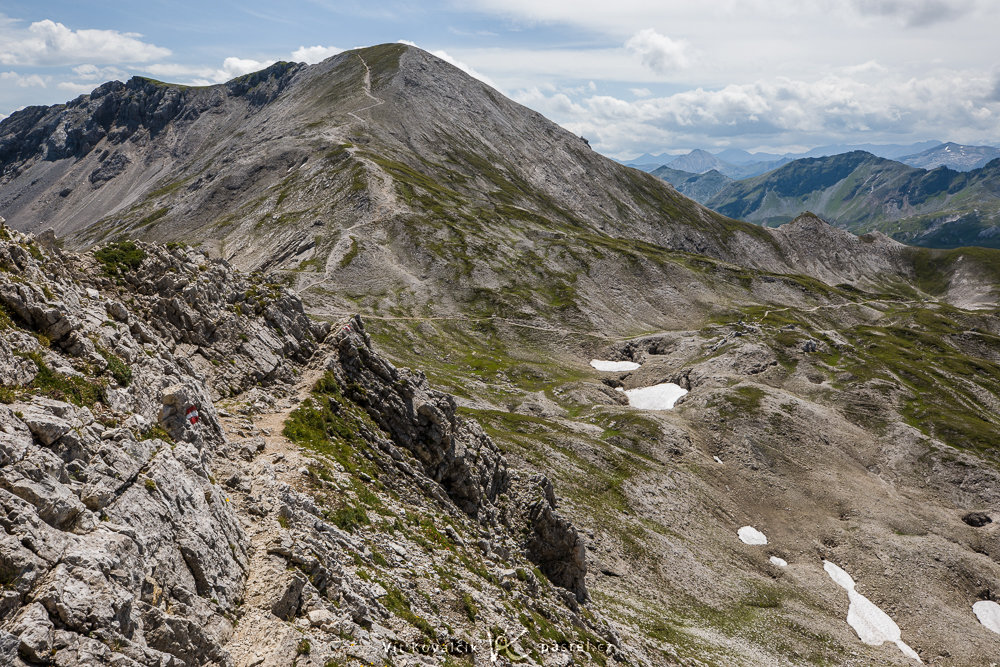
Canon 5D Mark IV, Canon EF 16-35/2.8 III, 1/125s, f/14, ISO 100, focal length 27mm
In the end, a spot on the slope of a nearby hill won out, which I photographed as I climbed up:
The lakes are clearly visible and the composition is aided by the distinctively shaped mountains rising over the horizon. At the same time, distant mountains appear through the valleys.
Morning and night research
Discounting any last-minute changes in weather, I was ready to set out the next day with confidence. But even this was a challenge, because I wasn’t staying nearby. Long story short: My alarm was set for 2:30 AM.
After breakfast and some quick last-minute preparations, I spent about an hour in the car before again arriving at the mountain parking lot. This brought me to 3:30 AM, about one hour before the official sunrise.
I calculated the time of sunrise using one of the apps, but these usually only take into account flat ground, not the mountains. If mountains are towering over you, then more time will pass before the sun rises over them. A half hour is common, but in the valleys, it can be an hour or more.
On the other hand, observing the sky before sunrise is a spectacular sight and often makes for some interesting photos. There was no time to waste. Most of the routes were along paved paths, so walking in the dark with a headlamp was easy. There is usually enough light about half an hour before sunrise to be able to travel without a flashlight. Light is usually worse in the woods, but better in open terrain.
Strangely enough, I saw camera flashes in the darkness from the highest peak I had visited the day before. For a moment, I envied the photographers who didn’t have to trudge uphill like me, but I continued on.
It took me about an hour and a quarter to get back to the designated spot, with 15 minutes to sunrise.
After some running around on the hillside and testing out different compositions in different places, I got a panorama similar to the one from the previous day:
To show how important light is for landscapes, I am posting the photo I took at noon the previous day:
The morning photography when the sun wasn’t visible yet was so spectacular that it was the winner. I didn’t know it at the time though, so I waited for sunrise (35 minutes), which wasn’t bad either. I don’t have the full panorama because I preferred the center of the scene:
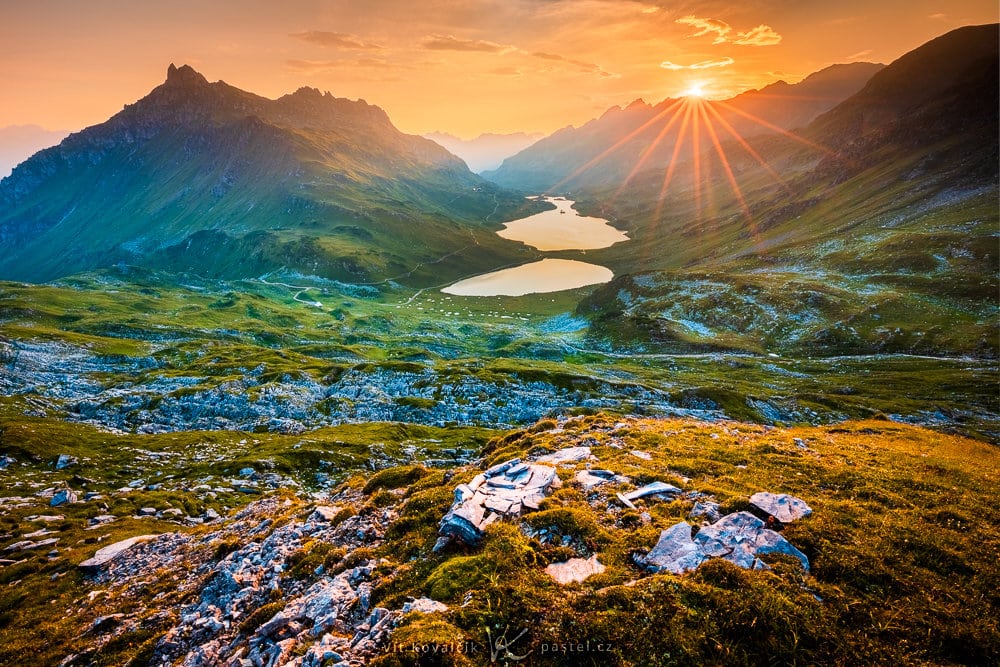
Canon 5D Mark IV, Canon EF 16-35/2.8 III, HDR – various speeds, f/14, ISO 100, focal length 16mm
Then, all that was left was to climb down and photograph the surroundings just for fun.

Canon 5D Mark IV, Canon EF 16-35/2.8 III, 1/800s, f/2.8, ISO 100, focal length 22mm
Everyday reminder
At the time of writing, this photo journey took place six years ago. But I still remember many things as if it were yesterday, thanks to the photos I took and the final photo that hangs above my desk. It’s one of the first canvas prints of my work that I made. And I’m happy I was able to share my experience and the story of how it came to be.
